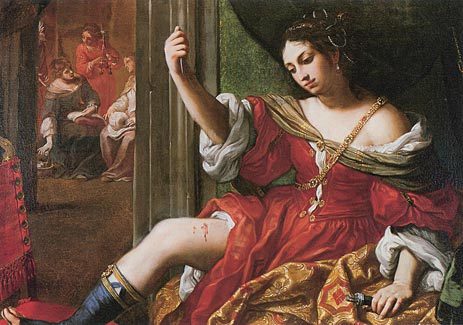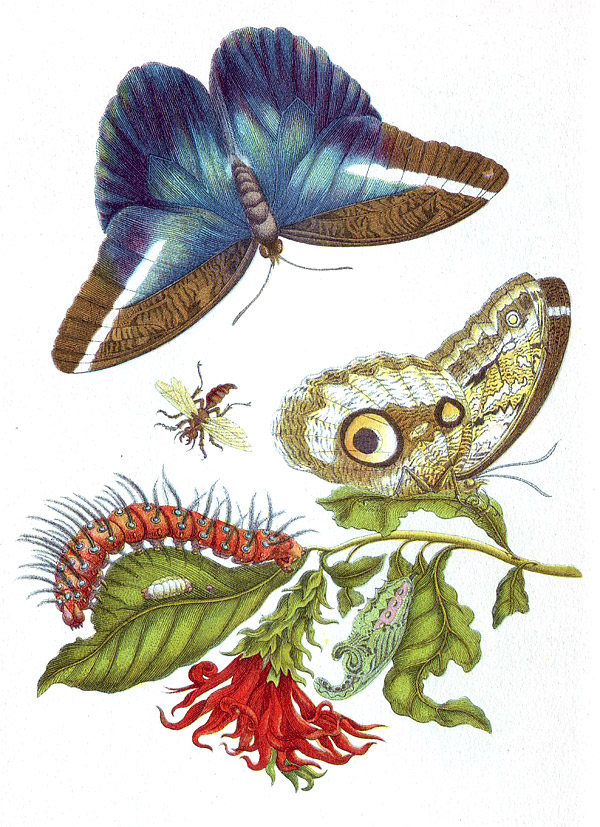 During the Middle Ages, religion and art were a huge part of society. The church mandated peoples roles in society, especially the one of women. Women were given an option; they could be either a house wife or a nun. Women were not taught how to read or write. They were expected to take care of the children, succumb to their husbands' commands, and if they did not choose this path, they were to go to a convent and become a nun. Contrary to one's belief, many women preferred to join the convent, and sometimes they would be educated there. Although nuns would receive a type of education, they were not allowed to teach. "Joining a convent freed women from the demanding roles of being wives and mothers' (Guerilla Girls 21). Imagine living in a society where you had to listen to your husband's every word, as well as being confined to only house labor. There was no fluidity for women in society; you were either one thing or the other.
During the Middle Ages, religion and art were a huge part of society. The church mandated peoples roles in society, especially the one of women. Women were given an option; they could be either a house wife or a nun. Women were not taught how to read or write. They were expected to take care of the children, succumb to their husbands' commands, and if they did not choose this path, they were to go to a convent and become a nun. Contrary to one's belief, many women preferred to join the convent, and sometimes they would be educated there. Although nuns would receive a type of education, they were not allowed to teach. "Joining a convent freed women from the demanding roles of being wives and mothers' (Guerilla Girls 21). Imagine living in a society where you had to listen to your husband's every word, as well as being confined to only house labor. There was no fluidity for women in society; you were either one thing or the other.  |
| Sofonisba Anguissola 1550 |
During the Renaissance period, women were allowed to do slightly more, but not much more. Most women were not allowed to join painters' guilds or academies. Even if women were to make a painting, they would not be able to receive commission or legally own an atelier (a workshop). However, being wealthy was an advantage some women had. There were times when women artists who were born into a noble family got the opportunity that other women did not. For example, Sofonisba Anguissola, "a noble whose father believed women should be educated", benefited immensely from this. Fathers at this time would usually concentrate on finding a husband for their daughter, while her father was willing to help her get an education. Not only did he do this for her, but he sent her drawings to the famous Michelangelo. You see, if Anguissola nor her father, had not been of the noble class, this would not have happened. Consequently, women who had wealthy families, or a family who supported it, would come to be known.
 |
| Portia Wounding Her Thigh Elisabetta Sirani 1664 |
Elisabetta Sirani was one of the most significant female figured of the Renaissance period. She was very talented, but because she was so talented, people did not believe the paintings were hers. This resulted in people believing that she would sign the work her father would do. To prove people wrong she began painting in public, so that people could see not only that it was genuinely her work, but that a woman was capable of creating such art, much of which people (predominantly males) refused to accept. She ended up painting for the court, kings and queens. She then decided to open up a school for women artists, something never seen before, or even heard of. This was an extremely huge step; firstly, women were not being educated at this time, and secondly, they would be female only, excluding men the same way they had done to women. In the painting to above, we see Portia purposely stabbing her thigh. "Portia has to prove herself virtuous and worthy of political trust by separating herself from the rest of her sex" (Chadwick 101). Portia shows courageous and strong she is by wounding herself, and that she can handle the pain just as well as any man could. She distinguishes herself from the private world of women. She separates herself from the idea people have of women.Instead of being in the background, Portia is in the foreground, and she is standing out to us.
Therefore, women in the Renaissance period had to have three main factors that would allow them to become successful women artists. They had to be born into nobility, not be married to an oppressor, and a dad that would be willing to support their daughter. When they did have these things, they had an opportunity to become a somewhat accepted female artist. The idea had gone from being a nun or housewife to a potential female artist.
 |
| More Pictures |
During 17th and 18th century paintings, the subject matter shifted to the male nude, but women were not allowed to paint them (or even learn how to). Women tended to focus more on detail in a painting.This would lead to the famous Anna Maria Sybilla Merian, also known as "The Original Spider Woman". She was interested in "animal and plant life", specifically into insects (Guerilla Girls 41). She would later do books on European insects, which lead to an important advance for botanical and zoological studies . This would later "pave the way for the scientific classification of species" (Guerilla Girls 41). Because Anna Maria Sybilla Merian saw that she could not paint things that men could, she took a different approach to painting a subject. She chose something that had not been prohibited for women to draw: insects, animals, etc (an example of one of her insect paintings is shown on the right). By doing this, she not only made herself look good, but she contributed to scientific development, which is outstanding, and impressive 'for a woman' at that time.
 In the 19th century, women began to sculpt, photograph and quilt, and they would be able to paint things other than insects and flowers. Rosa Bonheur had a fascination with animals, especially horses, cows, and bulls. She acquired a cross dressing permit so that her work would be easier, and generally, more accepted, which still signifies that no matter how many centuries pass, women still have to struggle to be an accepted artist. Although Bonheur's paintings had both horses and men, she focused mainly on the horses/animals, while making the men secondary. When you first look at the picture on the right, you barely notice the men, your eyes go directly to the cattle, which is done on purpose. Bonheur wants to catch an "impression", a glimpse of the moment, and paints it in a way that the men are irrelevant, so that we concentrate on the cattle. Women like Harriet Powers, an enslaved African American, utilized quilting and needlework to tell stories. Quilts would tell a story; one of the few forms slaves could tell stories, since they were illiterate. Women went on to photographing and sculpting as well; though generally accepted, they were, again, limited to what they could do.
In the 19th century, women began to sculpt, photograph and quilt, and they would be able to paint things other than insects and flowers. Rosa Bonheur had a fascination with animals, especially horses, cows, and bulls. She acquired a cross dressing permit so that her work would be easier, and generally, more accepted, which still signifies that no matter how many centuries pass, women still have to struggle to be an accepted artist. Although Bonheur's paintings had both horses and men, she focused mainly on the horses/animals, while making the men secondary. When you first look at the picture on the right, you barely notice the men, your eyes go directly to the cattle, which is done on purpose. Bonheur wants to catch an "impression", a glimpse of the moment, and paints it in a way that the men are irrelevant, so that we concentrate on the cattle. Women like Harriet Powers, an enslaved African American, utilized quilting and needlework to tell stories. Quilts would tell a story; one of the few forms slaves could tell stories, since they were illiterate. Women went on to photographing and sculpting as well; though generally accepted, they were, again, limited to what they could do. |
| Pictorial Quilt |
Works Cited
Chadwick, Whitney
Women, Art, and Society. New York, NY: Thames and Hudson, 2007. Print.
The Guerilla Girls' Beside Companion to the History of western Art. New York: Penguin, 1998. Print.
No comments:
Post a Comment